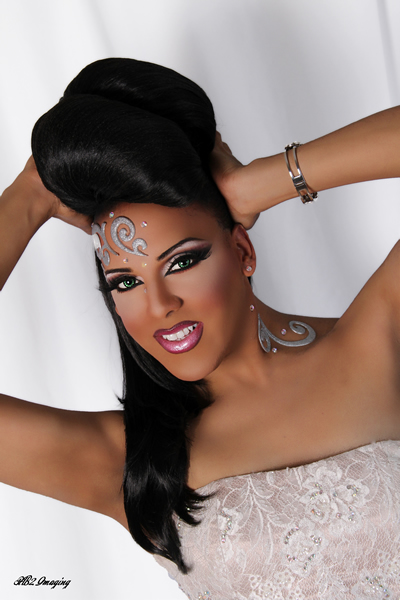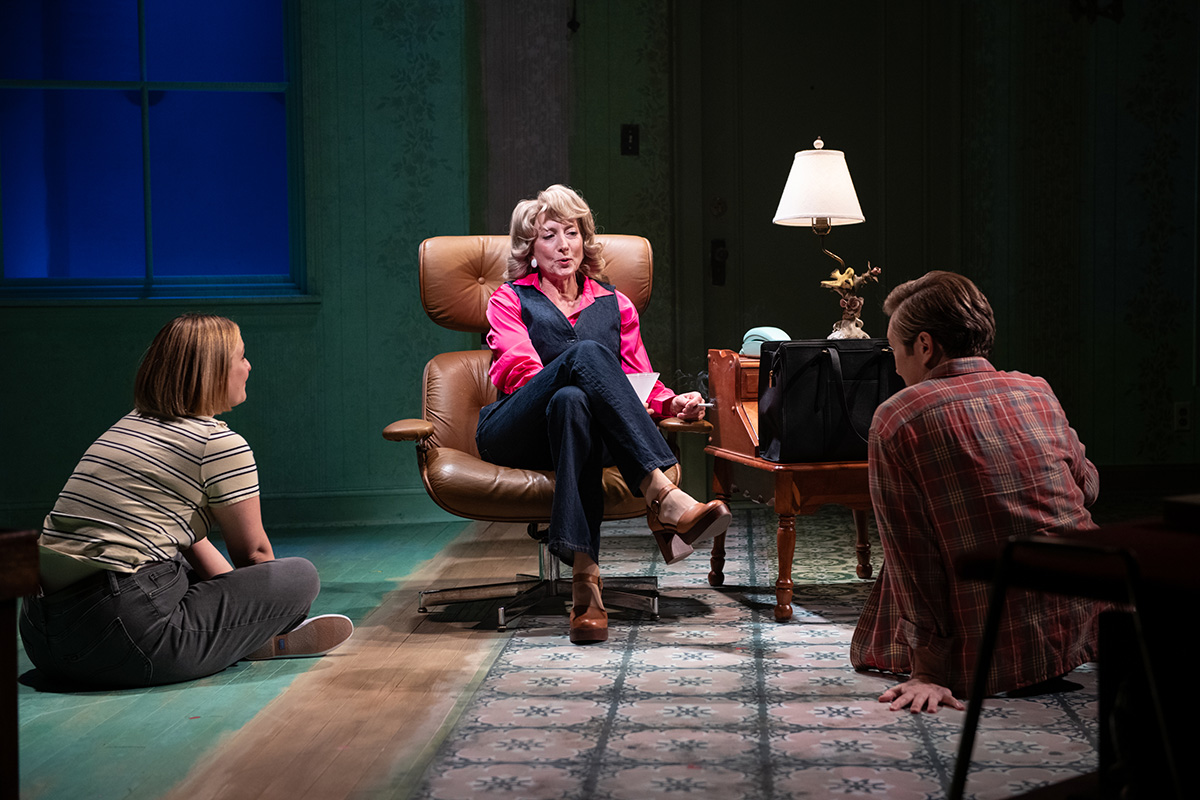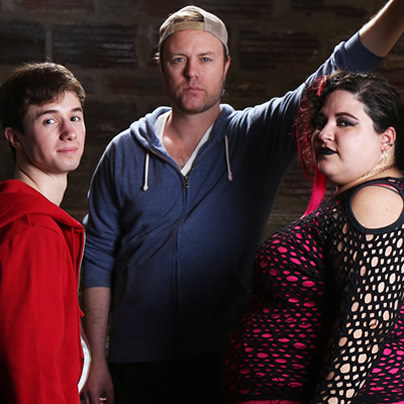Arts & Entertainment
Calendar: Oct. 28
Parties, meetings, exhibits and more through Nov. 3


Alexis Mateo, from the third season of ‘RuPaul's Drag Race,’ will be performing at the Lodge tonight as part of the final night of Araya Sparxx's All American Drag Off. (Photo courtesy of Mateo.)
TODAY
NADS 7.0 presents “Emerald Elegance,” the annual Green Lantern (1335 Green Court, N.W.) employees annual drag show, tonight at 10 p.m. This year the show will benefit the D.C. Center.
Synetic Theater (1800 South Bell St.) in Arlington, is continuing its Speak No More: The Silent Shakespeare Festival with Othello starring Roger Payano and Salma Shaw, tonight at 8 p.m. Tickets range from $45 to $55 and can be purchased online atsynetictheater.org.
Busboys & Poets will be hosting American Sign Language open mic poetry tonight at 11 p.m. in the Langston Room at its 14th and V streets location (2021 14th St., N.W.). Anyone with sign language knowledge may sign up to recite a poem or sign a song by e-mailing[email protected]. There is a $5 cover.
This week is the final night of Araya Sparxx’s All American Drag Off at the Lodge (21614 National Pike) in Boonsboro. The finalists, Alondra Sancheez, Russia DaCock and Chasity Vain will be judged by Sparxx and Sasha Renee. Alexis Mateo from “RuPaul’s Drag Race” will be performing alongside Sparxx, Renee, Ashley Bannks, Nicole James and Jessica Jade. Cover is $5 before 11:30 p.m. and $3 afterward. Doors open at 9 p.m.
The Department of Communication and Performing Arts at Montgomery College (7995 George Ave.) in Silver Spring, presents “Sex and Education,” a comedy which features a duel of wits between a graduating high school basketball star and his retiring English teacher tonight at 8 p.m. Tickets are $20 for general admission, $10 for seniors, $5 for MC students, faculty and staff. For more information and to purchase tickets, visitcms.montgomerycollege.edu/cac/
Saturday, Oct. 29
Lady Lenore and Maxine Blue present “Grown and Sexy,” tonight at Lace Lounge (2214 Rhode Island Ave., N.E.) at 9 p.m. There’s a $5 cover before 11:30 p.m. and all attendees must be 25 or older.
Studio Theatre (1501 14th St., N.W.) presents “The Habit of Art” by Alan Bennett, today at 2 and 8 p.m. “Habit” takes place in Rehearsal Room Two of London’s National Theatre as rehearsals fall apart after the director gets called out of town and the stage manager tries keep things together. Tickets range from $35 to $53 and can be purchased online atstudiotheatre.org.
The Black Cat (1811 14th St., N.W.) has two events going on backstage today. First up is the free event, Hellmouth Happy Hour, featuring an episode of “Buffy the Vampire Slayer” and drinks specials at 7 p.m. This week’s episode is “Anne,” the third season premiere. Then DJ lil’e takes over the space for her ‘80s Alt-Pop Dance night, Right Round. Tickets are $7 and doors open at 9:30 p.m.
Stephen Sondheim’s first musical “Saturday Night” will be presented as a concert event at Signature Theatre (4200 Campbell Ave.) in Arlington, for four performances today at 2 and 8 p.m. and Sunday at 2 and 7 p.m. The cast is led by Broadway’s Geoff Packard and many of D.C.’s leading talent.
Mead Theatre Lab at Flashpoint (916 G St., N.W.) presents Junesong Arts’ “We Fight We Die” by Timothy J. Guillot tonight at 8 p.m. “We Fight,” guided by a modern day chorus, tells the story of Q, a homeless graffiti artist who gets caught and must license his talents to the local government. Tickets are $15 for general admission and $10 for students and seniors. The show will run through Nov. 12.
Sunday, Oct. 30
The 53rd annual Washington International Horse Show is at the Verizon Center (601 F St., N.W.) today at 7 a.m. and 7 p.m. Tickets to the 7 a.m. program are $15 and the 7 p.m. program range from $40 to $60. All tickets can be purchased online at ticketmaster.com.
Nellie’s (900 U St., N.W.) will be showing the Baltimore Ravens at home as they take on the Arizona Cardinals today at 1 p.m. and the Washington Redskins take on the Buffalo Bills at 4:05 p.m.
Omega (2122 P St., N.W.) presents Church Lady Bingo hosted by Kristina Kelly tonight at 8:30 p.m. featuring $4 rail vodka. For more information, visit omedadc.com.
Monday, Oct. 31
WEAVE, a support group for LGBT survivors of intimate partner violence/abuse will be meeting from 7 to 8 p.m. at the Lighthouse Center for Healing (5321 First Place, N.E.). For more information and to register, call 202-280-6391.
Busboys & Poets is having an open mic poetry night with professional spoken word performers, open mic rookies and musicians at its Shirlington location (4251 S Campbell Ave.) in Arlington, tonight at 8 p.m. Wristbands for this event are $4 and will be on sale in the Global Exchange store today starting at 10 a.m.
Tuesday, Nov. 1
Nellie’s (900 U St., N.W.) presents Drag Bingo and Beauty Queens tonight to help raise money for Echoe Malone for Novembers Miss D.C. USA 2012 pageant, the official preliminary to Miss USA. For every Nellie beer sold, $1 goes toward her campaign. All guests must arrive at 6 p.m. Also tonight at Nellie’s is the “Glee” watch party at 8 p.m. on the deck in the pub room.
Join Burgundy Crescent Volunteers to help pack safer sex kits from 7 to 9 p.m. tonight at FUK!T’s packing location Green Lantern, 1335 Green Ct., N.W.
Wednesday, Nov. 2
Riot Act Comedy Theater’s (801 E St., N.W.) monthly gay and gay-friendly comedy show “Gay-larious” returns tonight at 8:30 p.m. with Adrienne Iapalucci, Brad Loekle and co-founders Chris Doucette and Zach Toczynski. Tickets are $15 and can be purchased online atriotactcomedy.com. This month, $5 from every ticket will benefit Capital Queer Prom.
The Washington Ballet’s “The Great Gatsby” opens tonight at the Kennedy Center (2700 F St., N.W.) at 8 p.m. Tickets range from $20 to $125 and can be purchased online atkennedy-center.org.
The Tom Davoren Social Bridge Club is meeting tonight at 7:30 p.m. at the Dignity Center (721 8th St., S.E.), across from the Marine barracks, for Social Bridge. No partner is needed. For more information, visit lambdabridge.com and click on “Social Bridge in Washington, D.C.”
An exhibit called “Shower of Stoles” is on display at Little River United Church of Christ (8410 Little River Turnpike, Annandale, Va.) today from 6 to 9 p.m. and through Nov. 6. The exhibit, organized by the National Gay & Lesbian Task Force, includes 50 stoles representing the lives of LGBT people of faith. The exhibit can be viewed on Sundays and during office hours on weekdays as well as tonight and Thursday evening (same hours). Visit lrucc.org for more information.
Thursday, Nov. 3
Girlyman plays tonight at Wolf Trap (1645 Trap Rd.) in Vienna with special guest Coyote Grace at 8 p.m. at the Barns. Tickets are $20 and can be purchased online atwolftrap.org.
Chely Wright and Lucy Wainwright Roche play the Birchmere (3701 Mt. Vernon Ave.) in Alexandria tonight at 7:30 p.m. This show is rescheduled from Oct. 20 and all tickets for that date will be honored. Tickets are $27.50 and can be purchased online atticketmaster.com.
D.C. Lambda Squares is having its plus with as-needed mainstream club night tonight from 7:30 to 9:30 p.m. at National City Christian Church (5 Thomas Circle, N.W.) with Dayle as the caller. For more information, visit dclambdasquares.org.

Santa will be very relieved.
You’ve taken most of the burden off him by making a list and checking it twice on his behalf. The gift-buying in your house is almost done – except for those few people who are just so darn hard to buy for. So what do you give to the person who has (almost) everything? You give them a good book, like maybe one of these.
Memoir and biography
The person who loves digging into a multi-level memoir will be happy unwrapping “Blessings and Disasters: A Story of Alabama” by Alexis Okeowo (Henry Holt). It’s a memoir about growing up Black in what was once practically ground zero for the Confederacy. It’s about inequality, it busts stereotypes, and yet it still oozes love of place. You can’t go wrong if you wrap it up with “Queen Mother: Black Nationalism, Reparations, and the Untold Story of Audley Moore” by Ashley D. Farmer (Pantheon). It’s a chunky book with a memoir with meaning and plenty of thought.
For the giftee on your list who loves to laugh, wrap up “In My Remaining Years” by Jean Grae (Flatiron Books). It’s part memoir, part comedy, a look back at the late-last-century, part how-did-you-get-to-middle-age-already? and all fun. Wrap it up with “Here We Go: Lessons for Living Fearlessly from Two Traveling Nanas” by Eleanor Hamby and Dr. Sandra Hazellip with Elisa Petrini (Viking). It’s about the adventures of two 80-something best friends who seize life by the horns – something your giftee should do, too.
If there’ll be someone at your holiday table who’s finally coming home this year, wrap up “How I Found Myself in the Midwest” by Steve Grove (Simon & Schuster). It’s the story of a Silicon Valley worker who gives up his job and moves with his family to Minnesota, which was once home to him. That was around the time the pandemic hit, George Floyd was murdered, and life in general had been thrown into chaos. How does someone reconcile what was with what is now? Pair it with “Homestand: Small Town Baseball and the Fight for the Soul of America” by Will Bardenwerper (Doubleday). It’s set in New York and but isn’t that small-town feel universal, no matter where it comes from?
Won’t the adventurer on your list be happy when they unwrap “I Live Underwater” by Max Gene Nohl (University of Wisconsin Press)? They will, when they realize that this book is by a former deep-sea diver, treasure hunter, and all-around daredevil who changed the way we look for things under water. Nohl died more than 60 years ago, but his never-before-published memoir is fresh and relevant and will be a fun read for the right person.
If celeb bios are your giftee’s thing, then look for “The Luckiest” by Kelly Cervantes (BenBella Books). It’s the Midwest-to-New-York-City story of an actress and her life, her marriage, and what she did when tragedy hit. Filled with grace, it’s a winner.
Your music lover won’t want to open any other gifts if you give “Only God Can Judge Me: The Many Lives of Tupac Shakur” by Jeff Pearlman (Mariner Books). It’s the story of the life, death, and everything in-between about this iconic performer, including the mythology that he left behind. Has it been three decades since Tupac died? It has, but your music lover never forgets. Wrap it up with “Point Blank (Quick Studies)” by Bob Dylan, text by Eddie Gorodetsky, Lucy Sante, and Jackie Hamilton (Simon & Schuster), a book of Dylan’s drawings and artwork. This is a very nice coffee-table size book that will be absolutely perfect for fans of the great singer and for folks who love art.
For the giftee who’s concerned with their fellow man, “The Lost and the Found: A True Story of Homelessness, Found Family and Second Chances” by Kevin Fagan (One Signal / Atria) may be the book to give. It’s a story of two “unhoused” people in San Francisco, one of the country’s wealthiest cities, and their struggles. There’s hope in this book, but also trouble and your giftee will love it.
For the person on your list who suffered loss this year, give “Pine Melody” by Stacey Meadows (Independently Published), a memoir of loss, grief, and healing while remembering the person gone.
LGBTQ fiction
For the mystery lover who wants something different, try “Crime Ink: Iconic,” edited by John Copenhaver and Salem West (Bywater Books), a collection of short stories inspired by “queer legends” and allies you know. Psychological thrillers, creepy crime, cozies, they’re here.
Novel lovers will want to curl up this winter with “Middle Spoon” by Alejandro Varela (Viking), a book about a man who appears to have it all, until his heart is broken and the fix for it is one he doesn’t quite understand and neither does anyone he loves.
LGBTQ studies – nonfiction
For the young man who’s struggling with issues of gender, “Before They Were Men” by Jacob Tobia (Harmony Books) might be a good gift this year. These essays on manhood in today’s world works to widen our conversations on the role politics and feminism play in understanding masculinity and how it’s time we open our minds.
If there’s someone on your gift list who had a tough growing-up (didn’t we all?), then wrap up “I’m Prancing as Fast as I Can” by Jon Kinnally (Permuted Press / Simon & Schuster). Kinnally was once an awkward kid but he grew up to be a writer for TV shows you’ll recognize. You can’t go wrong gifting a story like that. Better idea: wrap it up with “So Gay for You: Friendship, Found Family, & The Show That Started It All” by Leisha Hailey & Kate Moennig (St. Martin’s Press), a book about a little TV show that launched a BFF-ship.
Who doesn’t have a giftee who loves music? You sure do, so wrap up “The Secret Public: How Music Moved Queer Culture from the Margins to the Mainstream” by Jon Savage (Liveright). Nobody has to tell your giftee that queer folk left their mark on music, but they’ll love reading the stories in this book and knowing what they didn’t know.
The Blade may receive commissions from qualifying purchases made via this post.
Theater
Studio’s ‘Mother Play’ draws from lesbian playwright’s past
A poignant memory piece laced with sadness and wry laughs

‘The Mother Play’
Through Jan. 4
Studio Theatre
1501 14th St., N.W.
$42 – $112
Studiotheatre.org
“The Mother Play” isn’t the first work by Pulitzer Prize-winning lesbian playwright Paula Vogel that draws from her past. It’s just the most recent.
Currently enjoying an extended run at Studio Theatre, “The Mother Play,” (also known as “The Mother Play: A Play in Five Evictions,” or more simply, “Mother Play”) is a 90-minute powerful and poignant memory piece laced with sadness and wry laughs.
The mother in question is Phyllis Herman (played exquisitely by Kate Eastwood Norris), a divorced government secretary bringing up two children under difficult circumstances. When we meet them it’s 1964 and the family is living in a depressing subterranean apartment adjacent to the building’s trash room.
Phyllis isn’t exactly cut out for single motherhood; an alcoholic chain-smoker with two gay offspring, Carl and Martha, both in their early teens, she seems beyond her depth.
In spite (or because of) the challenges, things are never dull in the Herman home. Phyllis is warring with landlords, drinking, or involved in some other domestic intrigue. At the same time, Carl is glued to books by authors like Jane Austen, and queer novelist Lytton Strachey, while Martha is charged with topping off mother’s drinks, not a mean feat.
Despite having an emotionally and physically withholding parent, adolescent Martha is finding her way. Fortunately, she has nurturing older brother Carl (the excellent Stanley Bahorek) who introduces her to queer classics like “The Well of Loneliness” by Radclyffe Hall, and encourages Martha to pursue lofty learning goals.
Zoe Mann’s Martha is just how you might imagine the young Vogel – bright, searching, and a tad awkward.
As the play moves through the decades, Martha becomes an increasingly confident young lesbian before sliding comfortably into early middle age. Over time, her attitude toward her mother becomes more sympathetic. It’s a convincing and pleasing performance.
Phyllis is big on appearances, mainly her own. She has good taste and a sharp eye for thrift store and Goodwill finds including Chanel or a Von Furstenberg wrap dress (which looks smashing on Eastwood Norris, by the way), crowned with the blonde wig of the moment.
Time and place figure heavily into Vogel’s play. The setting is specific: “A series of apartments in Prince George’s and Montgomery County from 1964 to the 21st century, from subbasement custodial units that would now be Section 8 housing to 3-bedroom units.”
Krit Robinson’s cunning set allows for quick costume and prop changes as decades seamlessly move from one to the next. And if by magic, projection designer Shawn Boyle periodically covers the walls with scurrying roaches, a persistent problem for these renters.
Margot Bordelon directs with sensitivity and nuance. Her take on Vogel’s tragicomedy hits all the marks.
Near the play’s end, there’s a scene sometimes referred to as “The Phyllis Ballet.” Here, mother sits onstage silently in front of her dressing table mirror. She is removed of artifice and oozes a mixture of vulnerability but not without some strength. It’s longish for a wordless scene, but Bordelon has paced it perfectly.
When Martha arranges a night of family fun with mom and now out and proud brother at Lost and Found (the legendary D.C. gay disco), the plan backfires spectacularly. Not long after, Phyllis’ desire for outside approval resurfaces tenfold, evidenced by extreme discomfort when Carl, her favorite child, becomes visibly ill with HIV/AIDS symptoms.
Other semi-autobiographical plays from the DMV native’s oeuvre include “The Baltimore Waltz,” a darkly funny, yet moving piece written in memory of her brother (Carl Vogel), who died of AIDS in 1988. The playwright additionally wrote “How I Learned to Drive,” an acclaimed play heavily inspired by her own experiences with sexual abuse as a teenager.
“The Mother Play” made its debut on Broadway in 2024, featuring Jessica Lange in the eponymous role, earning her a Tony Award nomination.
Like other real-life matriarch inspired characters (Mary Tyrone, Amanda Wingfield, Violet Weston to name a few) Phyllis Herman seems poised to join that pantheon of complicated, women.
Bars & Parties
Mixtape Sapphics hosts holiday party on Dec. 13
‘Sugar & Spice’ night planned for Saturday

Mixtape Sapphics will host “Sapphic Sugar & Spice: A Naughty-Nice Mixtape Holiday Party” on Saturday, Dec. 13 at 4 p.m. at Amsterdam Lounge.
This is a festive, grown holiday party for queer women and sapphics 35 and older at Revolt’s Christmas pop-up. There will be music, joy, and an optional White Elephant.
This is Mixtape Sapphics’ first-ever holiday party — a cozy, flirty, intentionally grounded night created just for queer women and sapphics 35+ who want real connection, festive joy, and a warm place to land at the end of the year.
Tickets start at $13.26 and can be purchased on Eventbrite.

















